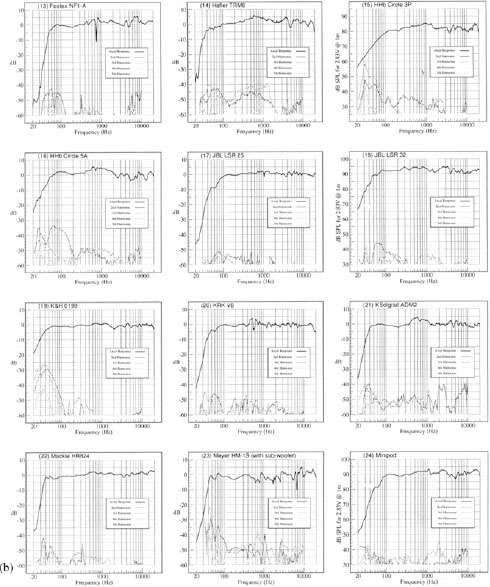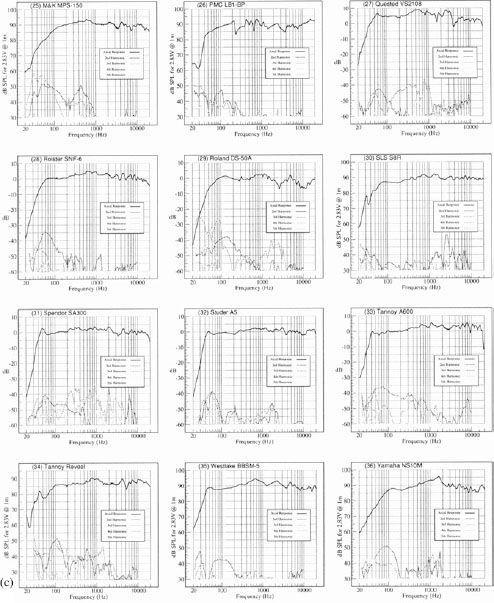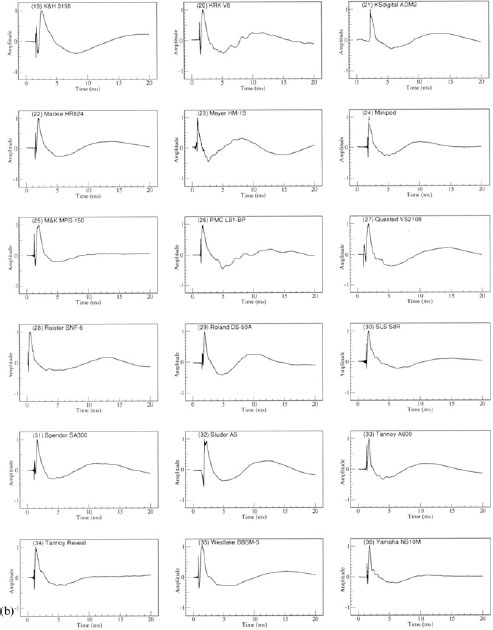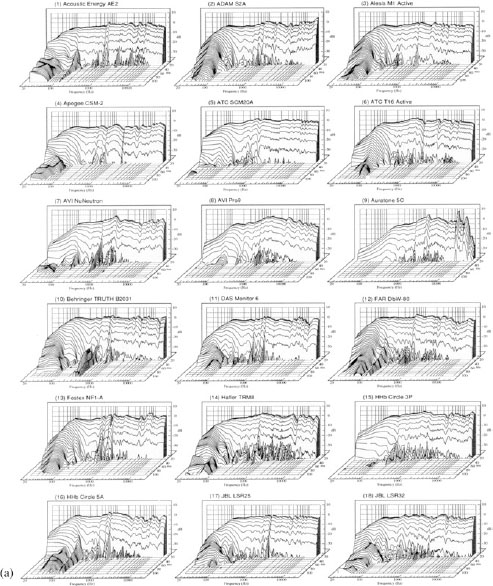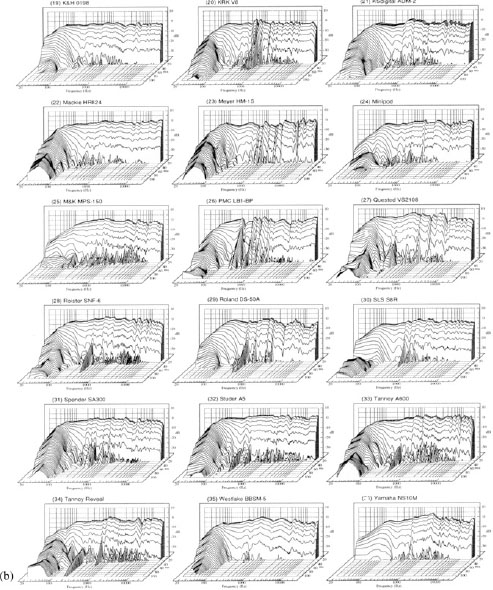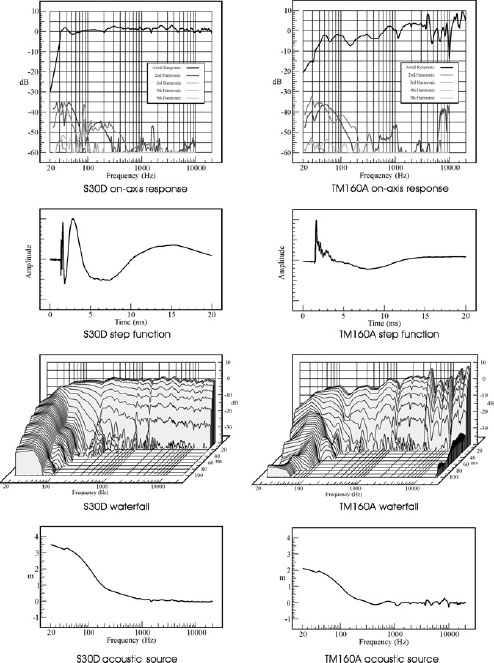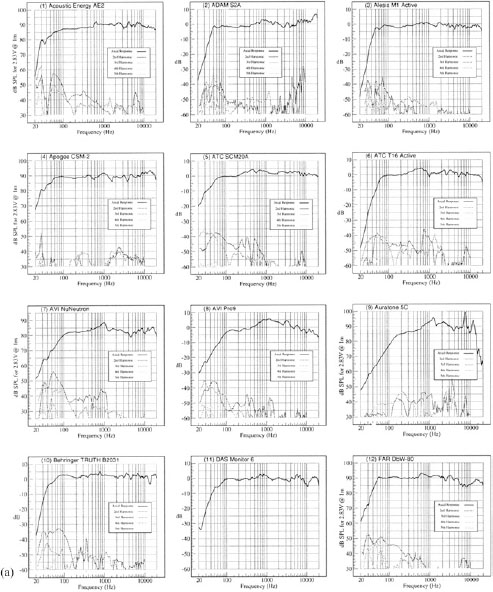
Figure A.2.1 (a–c) On-axis frequency response and harmonic distortion (a) numbers 1–12
Figure A.2.1 cont. (b) numbers 13–24
Figure A.2.1 cont. (c) numbers 25–36
Figure A.2.2 (a, b) Step responses, (a) numbers 1–18
Figure A.2.2 cont. (b) 19–36
Figure A.2.3 (a, b) Waterfall plots, (a) numbers 1–18
Figure A.2.3 cont. (b) 19–36
Figure A.2.4 From the comparison of the various response characteristics of the Genelec S30D and the SAE TM160A loudspeakers, some interesting points can be highlighted. The S30D possesses a variety of switches for modifying the response according to mounting conditions or taste. When the switches are set to give a flat response in anechoic conditions, as shown above, the time response suffers badly, as can be seen from the waterfall and acoustic source plots. For the most natural sound, with faster transients, the flat response is not always (and for small boxes it is rarely) the optimum response.1
The side-by-side comparison of the responses of the two loudspeakers shown in this figure tends to raise the question as to just how it can be that two so dissimilar loudspeakers are ostensibly designed to perform similar tasks. Both loudspeakers were submitted as part of the Studio Sound loudspeaker test series, but the magazine closed down before these results were published. They were tested under identical conditions to the 36 loudspeakers shown in the previous three figures. This one again highlights how the responses published by the manufacturers of almost all the loudspeakers are sadly lacking in details of their very important time responses
1 Newell, P. R., Holland, K. R. and Mapp, P., ‘The perception of the reception of a deception’, Proceedings of the Institute of Acoustics [Reproduced Sound 18 conference], Vol. 24, Part 8, UK (2002)

